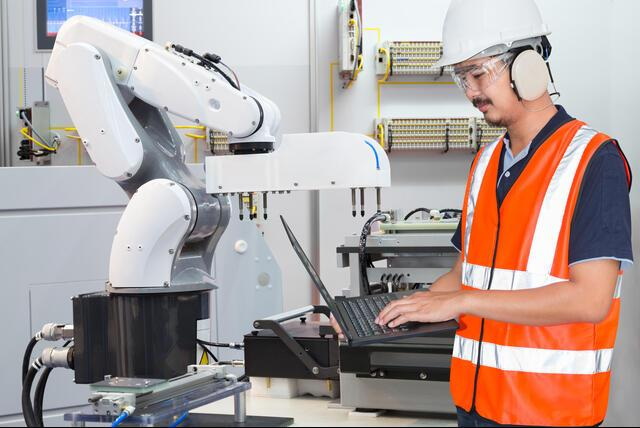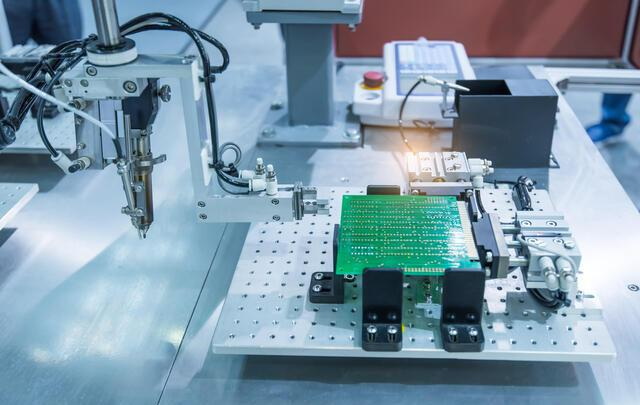Content Menu
● Understanding SMT PCB Unloaders Machine
>> Key Features of SMT PCB Unloaders Machine
● Integration of SMT PCB Unloaders with Other SMT Equipment
>> 1. SMEMA Interface Compliance
>> 2. Conveyor System Synchronization
>> 3. Automated Magazine Handling
>> 4. Vision and Inspection System Integration
>> 5. Control System and User Interface Integration
● Benefits of Integrating SMT PCB Unloaders with SMT Lines
● Practical Examples of SMT PCB Unloader Integration
>> Hayawin SMT PCB Magazine Unloader
>> I.C.T Automatic SMT Dual-Rails PCB Unloader
● Challenges and Considerations in Integration
● Conclusion
● FAQ
>> 1. What is the primary function of an SMT PCB unloader machine?
>> 2. How does SMEMA compliance benefit SMT PCB unloaders?
>> 3. Can SMT PCB unloaders handle different PCB sizes and types?
>> 4. How do SMT PCB unloaders integrate with vision inspection systems?
>> 5. What role does the PLC play in SMT PCB unloader integration?
Surface Mount Technology (SMT) has revolutionized electronics manufacturing by enabling rapid, precise, and automated assembly of printed circuit boards (PCBs). Within an SMT production line, the SMT PCB unloader machine plays a critical role in efficiently handling completed PCBs after assembly and soldering processes. This article explores how SMT PCB unloaders integrate seamlessly with other SMT equipment, enhancing production efficiency, reducing manual labor, and ensuring product quality.

Understanding SMT PCB Unloaders Machine
An SMT PCB unloader machine is designed to automatically remove assembled PCBs from the SMT production line, typically at the end of the assembly or soldering process. These machines handle the delicate task of unloading PCBs from magazines or conveyors and prepare them for downstream processes such as inspection, testing, or packaging.
Key Features of SMT PCB Unloaders Machine
- Conveyor Systems: Transport PCBs smoothly from the SMT line to unloading stations.
- Vision Systems: Ensure precise alignment and orientation of PCBs before unloading.
- Programmable Logic Controllers (PLC): Control the operation of unloading, conveyor speed, and synchronization with other equipment.
- Stacking or Buffering Mechanisms: Accumulate unloaded PCBs to maintain continuous production flow.
- User Interfaces: Provide operators with real-time control and monitoring capabilities.
- Safety Features: Include sensors and emergency stops to protect operators and equipment.
- Compatibility: Designed to handle a variety of PCB sizes and types with gentle handling to avoid damage.
Integration of SMT PCB Unloaders with Other SMT Equipment
Integration is key to achieving a fully automated and efficient SMT production line. SMT PCB unloaders machine are designed to communicate and operate in harmony with upstream and downstream SMT equipment.
1. SMEMA Interface Compliance
Most SMT PCB unloaders are SMEMA (Surface Mount Equipment Manufacturers Association) compliant. This standard interface ensures that the unloader can connect and synchronize with other SMT machines such as:
- Pick-and-Place Machines
- Solder Paste Printers
- Reflow Ovens
- Automated Optical Inspection (AOI) Systems
- Wave Soldering Machines
SMEMA compatibility allows for seamless handoff of PCBs between machines, facilitating smooth line flow and reducing downtime.
2. Conveyor System Synchronization
The unloader's conveyor system is synchronized with upstream conveyors and loaders to ensure continuous transport of PCBs without jams or delays. This synchronization is managed by the PLC, which coordinates conveyor speeds and timing signals with other equipment to maintain a steady production pace.
3. Automated Magazine Handling
Many SMT PCB unloaders incorporate magazine loading and unloading systems. These systems automatically handle PCB magazines, which store multiple PCBs securely during transport. The unloader extracts PCBs from magazines and feeds them onto the conveyor or directly into the next process. This automation reduces manual handling and potential damage to PCBs.
4. Vision and Inspection System Integration
Advanced SMT PCB unloaders may feature integrated vision systems that verify PCB orientation and detect defects before unloading. These vision systems can also communicate with AOI machines and testing equipment to sort OK and NG (No Good) boards automatically. Some unloaders are equipped with NG/OK sorting functions, separating defective boards from good ones to streamline quality control.
5. Control System and User Interface Integration
The PLC and touchscreen interface on SMT PCB unloaders allow operators to customize and monitor the unloader's operation. These control systems can be networked with factory automation software and Manufacturing Execution Systems (MES) to provide real-time production data and facilitate line-wide control.

Benefits of Integrating SMT PCB Unloaders with SMT Lines
- Improved Production Efficiency: Automated unloading reduces manual labor and speeds up the production cycle.
- Enhanced Product Quality: Gentle handling and vision inspection minimize PCB damage and ensure correct orientation.
- Reduced Downtime: Buffering and stacking mechanisms allow continuous line operation even if downstream processes slow down.
- Flexibility: Adjustable width and size settings accommodate various PCB dimensions without manual adjustments.
- Seamless Communication: SMEMA compliance ensures smooth data and material flow between machines.
Practical Examples of SMT PCB Unloader Integration
Hayawin SMT PCB Magazine Unloader
Hayawin's SMT PCB magazine unloader system is designed for easy integration with existing SMT lines. It features:
- PLC programmable controller with touchscreen
- Servo motor-driven lifting and precise magazine positioning
- SMEMA interface for communication with other SMT equipment
- Compatibility with multiple magazine sizes and PCB dimensions
- Safety door lock and shutdown protection
I.C.T Automatic SMT Dual-Rails PCB Unloader
This unloader uses a PLC-controlled system and touchscreen interface to provide ease of use and integration. Its SMEMA compliance allows it to connect seamlessly with conveyors, AOI, and pick-and-place machines, ensuring smooth PCB transfer and handling.
Challenges and Considerations in Integration
- Compatibility: Ensuring the unloader matches the size, thickness, and type of PCBs used in the line.
- Communication Protocols: Aligning PLC programming and communication standards across different equipment brands.
- Space Constraints: Designing the production line layout to accommodate unloader machines without bottlenecks.
- Maintenance and Training: Proper training for operators and maintenance personnel to handle integrated systems efficiently.
Conclusion
SMT PCB unloaders machine are vital components in modern SMT production lines, enabling efficient, automated unloading of PCBs. Their integration with other SMT equipment through SMEMA interfaces, synchronized conveyors, automated magazine handling, and vision inspection systems ensures smooth production flow, reduces manual labor, and enhances product quality. By carefully selecting and integrating SMT PCB unloaders, manufacturers can optimize their SMT lines for higher throughput, flexibility, and reliability.

FAQ
1. What is the primary function of an SMT PCB unloader machine?
An SMT PCB unloader machine automatically removes assembled PCBs from the SMT line, preparing them for inspection, testing, or packaging, thereby reducing manual handling and increasing production efficiency.
2. How does SMEMA compliance benefit SMT PCB unloaders?
SMEMA compliance ensures that the unloader can communicate and synchronize with other SMT machines, allowing seamless PCB transfer and coordinated operation across the production line.
3. Can SMT PCB unloaders handle different PCB sizes and types?
Yes, most SMT PCB unloaders feature adjustable width and height settings, enabling them to accommodate a wide range of PCB sizes and thicknesses without manual modifications.
4. How do SMT PCB unloaders integrate with vision inspection systems?
Many unloaders incorporate vision systems to verify PCB orientation and detect defects before unloading. They can also interface with AOI machines to automatically sort OK and NG boards, improving quality control.
5. What role does the PLC play in SMT PCB unloader integration?
The PLC controls the unloader's operations, synchronizes conveyor speeds with other equipment, manages error handling, and provides a user interface for monitoring and adjustments, ensuring smooth integration into the SMT line.




















